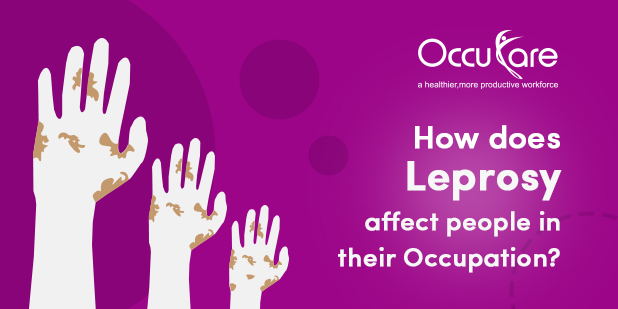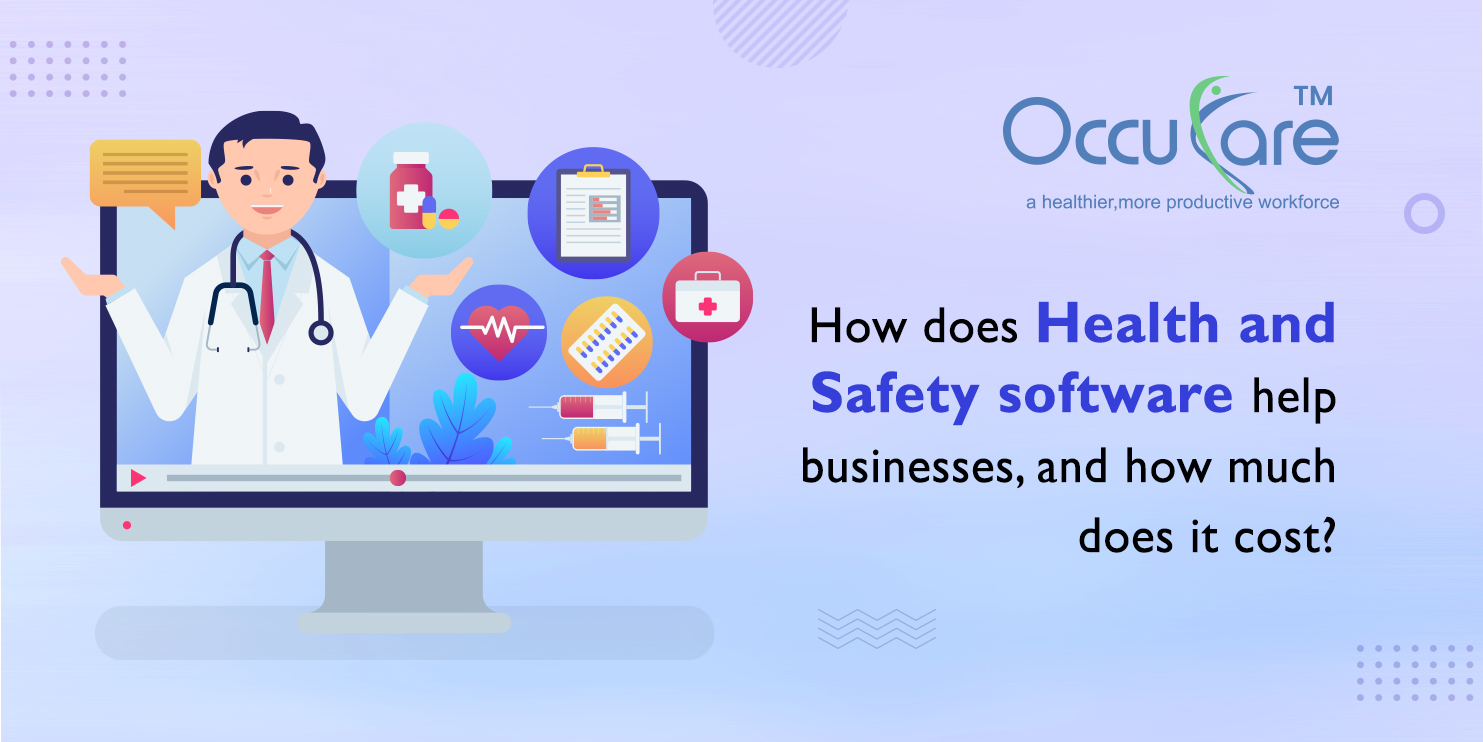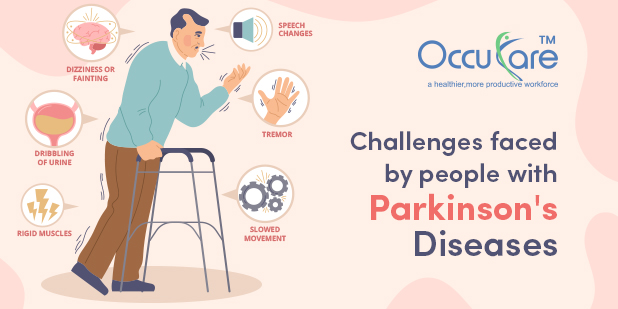To know how Leprosy affects people in their occupation, let’s know what exactly Leprosy is and its signs and symptoms.
What exactly is leprosy?
Mycobacterium leprae (M. leprae) bacteria can cause leprosy, which is a chronic condition. It can cause problems with the skin and nerves of the hands and feet, and also the eyes and nasal tissue. Leprosy can damage other organs, such as the kidneys and testicles in men, in some situations. Leprosy can induce abnormalities in the hands and feet, blindness, and kidney failure if remain unchecked.
Leprosy was formerly thought to be a very infectious and deadly sickness, but we already know that it is not widely disseminated and that therapy is very efficient. If neurological injury is not corrected, it can lead to paralysis, blindness, and crippling of the hands and feet.
Statement from the World Health Organization
WHO established ‘WHO guidance document for the diagnostic test, therapeutic interventions, and protection of leprosy 2018’ in 2018, after reviewing evidence presented on important issues related to leprosy eradication and suggesting a three-drug regimen (rifampicin, dapsone, and clofazimine) for both pauci-bacillary and multibacillary types of leprosy. The guidelines also recommended that eligible family and social contacts receive a single dose of rifampicin to prevent leprosy.
In April 2021, WHO announced ‘Towards Zero Leprosy -– Global Leprosy (Hansen’s disease) Strategy 2021-2030’ in line with NTD road plan 2030, following extensive discussions with nations, specialists in leprosy, collaborators, and people afflicted by leprosy.
The strategy is published in English, with translated editions available in French, Portuguese, Spanish, and Russian to reach a larger worldwide readership.
Leprosy signs and consequences
Leprosy is a disease that takes a long time to develop. After being diagnosed with the bacterium, most patients with leprosy need not show symptoms for at least a year. Signs usually take 5 to 7 years to appear in the majority of instances.
Leprosy causes central nervous system dysfunction. On the epidermis, it can produce ulcers, lesions, lumps, and pimples. Tuberculoid leprosy and lepromatous leprosy are the two kinds of leprosy. Tuberculoid leprosy is a milder and less contagious type of leprosy. Lepromatous leprosy is a much more severe and widespread form of leprosy. In addition, it is more contagious. Organs such as the kidneys, testicles (in men), eyes, and nose may be affected by this kind of leprosy.
- Signs of leprosy vary based on the variety.
– Unhealed skin sores or lesions after many months (lesions are flat or slightly elevated and light in colour or slightly red)
– Severe facial ridges and pimples on the skin
– Skin tingling as a result of nerve injury beneath the skin
– Muscle spasms
What is the source of leprosy?
Leprosy grows in mysterious ways, according to physicians. Leprosy is not a particularly infectious disease. It is impossible to contract the disease by touching someone who has it. The majority of instances of leprosy are caused by prolonged and frequent contact with someone who has the illness. Leprosy is thought to be spread from person to person, according to doctors. This is accomplished by inhaling particles released into the air by infected patients coughing or sneezing. M. leprae does not cause leprosy in the majority of persons who come into contact with it. People with compromised immune systems (such as those who have diabetes, HIV, AIDS, or heart disease) are more prone to get leprosy. This is due to their immune systems’ inability to combat the bacterium. Check out the best occupational health and safety software.
Characteristics of leprosy patients’ professions/occupations and their link to limits in professional responsibilities
A parasitological poll was performed to determine the frequency of Mycobacterium leprae infection and accompanying variables among healthcare professionals. Using immunoglobulin M serology, 26 (9.3%) of 280 workers tested positive for PGL-I M. leprae antigen. Seropositivity was substantially linked with job exposure to leprosy patients (P=.044).
Individuals with leprosy avoid working and have trouble finding work, performing their tasks, or nearing retirement. The goal of this study was to see if there was a link between profession/occupation and activity limits. The SALSA scale (Screening of Activity Limitation and Safety Awareness) was included in this pass study to measure limits and categorize occupations as moderate, intermediate, or significant risk. 50.2 percent of the 277 respondents polled were men, the average age was 53.8 years (SD = 16.3), 62.7 percent had a multibaccalaureate, 59.7% had income levels of three basic salaries or less, 58.5 percent had up to six years of study, and 57 percent had no paid work. In terms of vocations, 45.8% were judged low risk, 39.7% moderate risk, and 12.3% high risk.
In total, 49.1% had mild/moderate limits, 8.7% had severe/very serious restrictions, and 42.2 percent had no constraints. People with significant limits had low-risk occupations (p value 0.05), according to the association between limitations in activities and occupational danger. The restrictions linked with employment revealed that the majority of active people have none (p value 0.05). As a result, most persons who have had leprosy have low-risk occupations or jobs; the constraints encourage a move away from high-risk activities and make it difficult to find work.
The treatment of leprosy patients and their relatives by governments, towns, institutions, businesses, physicians, and other organisations, including religious institutions, has constituted a major infraction of their human rights at various periods and places, robbing them of their dignity. Leprosy patients have faced forced isolation, restricted or no access to social assistance, job discrimination, educational barriers, and difficulties obtaining a place to reside, to name a few.
Stigma is a difficult issue that can affect all aspect of a person’s life who has been diagnosed with leprosy. The impact of stigma on revenue creation was the primary focus of this research. This is a significant issue because a person’s feeling of identity and how others view them are inextricably linked to their money and work status. The term “income generation” refers to both the sort of job and the ability to find work. A person’s reputation and well-being are tied to the type of job they have.
As noted previously, leprosy as a disease has far-reaching consequences beyond its medical consequences, the most significant of which is stigma. Goffman’s definition and description of stigma are the most frequently recognised. The name ‘Stigma’ was coined by the ancient Greeks, according to Goffman. Stigma was a term used to describe physiological indicators that were intended to reveal something uncommon or negative about the signifier’s moral position.
The Stigmas were sliced or burned into the body, indicating that the bearer was a slave, a criminal, or a traitor – a blemished, ritually contaminated individual who should be avoided, particularly in public settings. Today, the phrase refers to the disgrace rather than the physical proof of it.
In this study, the term stigma will be used to describe a trait that is highly disparaging. Stigma has two perspectives: does the stigmatised individual assume that his or her uniqueness already is recognized about or readily apparent, or did he specifically she believe that it is hardly known about nor instantly perceptible by those present? In the first situation, the ‘discredited’ is dealt with, whereas in the second, the ‘discreditable’ is dealt with.
Goffman also defines courtesy stigma as the extending of a person’s stigma to others who are connected to them through the social system. Because of the connection, society treats both persons as one in certain ways – there is an obligation to share some of the stigmatised person’s shame.
Hetherton et al. expand on Goffman’s concepts and argue that stigmatisation is expensive on a personal, relational, and social level. It is a social concept that has at minimum two main components: first, the recognition of difference based on some identifying characteristic or’mark,’ and second, the devaluation of the individual as a result of that identification. People who have been stigmatised are seen as defective, damaged, and less than fully human.
The emotional reactions that individuals, groups, or societies have toward leprosy patients are described by Bainson and Van den Bourne as a series of ‘affective dimensions.’ Pity, anger, and terror are among these feelings. Fear, more than any other affective dimension, is most likely to contribute to stigmatisation in the case of leprosy.
Leprosy, Suffering, and Earnings
A person’s sense of well-being, as well as their perception of their utility, is intricately related to their capacity to generate revenue and find work. The ability to provide for dependants is linked to a sense of worth and fulfilment in one’s role for the spouse or parent.
Few studies have been done on leprosy, stigma, and revenue-generating. Some researchers, on the other hand, have looked into the subject. “Even today, societal stigmatisation is common,” Deepak et al. write, “such that affected persons with clear evidence of persistent symptoms seem unable to work or marry, they become dependent for care and financial support, resulting to anxiety, embarrassment, solitude, and economic damage.” While Scott discovered that all of the individuals in his study of the psychosocial needs of leprosy patients in South Africa were terrified of losing their jobs, and 17 out of 30 did not tell their employers about their sickness.
In their research of leprosy-affected homeless in India, Kaur and Van Brakel discovered that the combination of leprosy, physical limitations, and social stigma contributes to the leprosy-affected person’s ‘dehabilitation,’ which ends with the individual being a beggar.
In this context, dehabilitation is described as the loss of one’s prior place in society or social role, resulting in a loss of dignity, employment, and/or status, as well as physically relocation. In their given set of operating guidelines for the rehabilitation of persons affected by leprosy, Nicholls and Smith comment on the experience of people affected by leprosy, stressing out that many of these people live in great poverty and have little possibilities to generate an income.
They may be barred from returning to their previous workplace or denied access to their previous market. They go on to say that the physical effects of leprosy may make it hard for them to continue working. This is an incredibly important issue; it is not simply a case of stigma being the primary cause of revenue loss; there are other elements at play.
De Stigter et al. found that people with leprosy tried to hide their sickness out of fear of unfavourable community behaviour in an investigation of community behaviour regarding leprosy patients in eastern Nepal (stigma).
They claim that “those with leprosy are excluded from social life…they have difficulty finding work or are turned down for jobs.” In general, people with leprosy face hostile reactions, insults, hatred, abandonment, or rejection…” They go on to say that “fear of germ infection” and “fear of a God’s curse” are the driving forces for such poor group behaviour.










































































